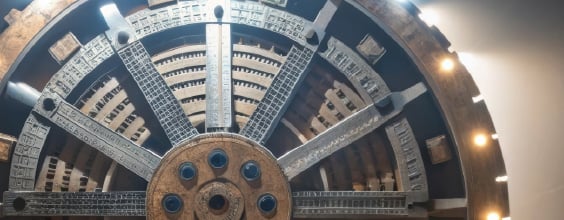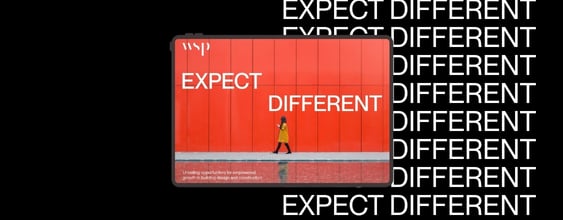By Adrian Malone, Head of Digital Project Delivery, WSP in the UK
If we did, designers wouldn’t have to keep creating lots of bespoke individual schemes from scratch. Instead, they would use platforms of products – elements such as safety barriers, gantries or drainage – that could be applied across road schemes, and even adjacent infrastructure such as rail. Freed from solving the same problems on each scheme, they could focus on improving service for customers – enhancing safety and reliability, as well as reducing journey times.
This is because a manufacturing production model based around platforms of products does two key things. First, it enables engineers to obtain and analyse reliable data on current performance across a range of factors, due to standardisation across multiple schemes. Second, it focusses the design effort on evolving the platform to improve this performance.
Putting people first
In other words, this approach puts people, rather than products, at the heart of the design process. In this future, designers can focus on how to make platforms that create network-wide benefits such as reducing congestion for drivers, improving safety for construction workers or avoiding disruption during works.
What about the problems that designers spend their time solving today? Engineering challenges such as site interface issues will increasingly be solved using standard components and solutions. Designers won’t create a solution for an individual project; they’ll design a platform that provides a solution for hundreds of projects.
This approach opens up greater opportunities for specialisation too, with specialist design teams developing each iteration of the platform. For example, if a platform is required to solve road restraint design and installation, a team would be created specifically for the task. In the rest of this post we’ll focus on what the job of a designer would look like in such a team.
Meet Astrid, platform designer
Astrid is working as part of a design team developing the next evolution of a road infrastructure platform – an integrated solution for highway capacity upgrade. The platform contains:
- Design rules
- Product specifications
- Information for fabricators to manufacture the component parts
- Specifications to support logistics planning such as manufacturing times, component weight and stacking information for transportation
- Site assembly instructions
Performance data about the existing platform tells Astrid that although the safety record has been high, there have been issues with logistics and installation. Because of its success, the platform is being applied to infrastructure upgrades that it was not originally intended for and the combination of components required for these schemes results in some trucks arriving on site half-empty. More lorry journeys to site increases cost per km of road, energy use and journey times for other road users.
Astrid and her colleagues decide to apply a technique called generative design, which uses artificial intelligence in a goal-driven process to produce thousands of different design options. At the end of the process, which takes just moments, six new design options that best meet their performance criteria are presented to the engineering team. They can then evaluate these options, make some adjustments to the rules being applied by the generative design tool, and make some manual adjustments and refinements – a process they like to call ‘hand finishing’ the design.
Then, using 3D printing facilities, they manufacture a series of to-scale prototypes to get a feel for how the new design will work in practice and iron out a few additional wrinkles. For example, prototyping allows Astrid and the team to test and refine the design of the connectors and supports used for on-site assembly through using scale models. Once they’re happy, they run the design through a series of simulations, one of which calculates the optimum pattern for loading the components onto the trucks.
The simulation shows that, without compromising safety performance or manufacturing cost, the new design will result in reduced truck movements, transport costs, impact on road customers and energy use.
This single design project that Astrid and her colleagues worked on will benefit multiple road schemes – until it’s time to improve the platform even further with the next iteration.
Astrid was not surprised that her team’s solution involved the support and connections of the system; she was excited to submit it to the Advanced Manufacturing team, knowing that if it passed validation it would be added to the digital portfolio and therefore made available to any project as a manufacturing component.
About Adrian Malone:
Adrian is Head of Digital Project Delivery and BIM for Transport & Infrastructure at WSP in the UK. With more than 20 years of experience in the construction sector, Adrian has spent the majority of his career engaged with innovation and research in BIM and digital training including EU-funded research on industrialised construction, BIM initiatives with professional institutions such as RICS and APM, and most recently, i3P. Adrian has a master’s degree in information systems, and combines his technical knowledge with a strong people and customer focus. He has experience in contacting and consulting organisations as well as both construction and facilities management. Adrian is a passionate advocate for innovation and digital transformation in the construction and engineering sector. Follow him on LinkedIn here.













